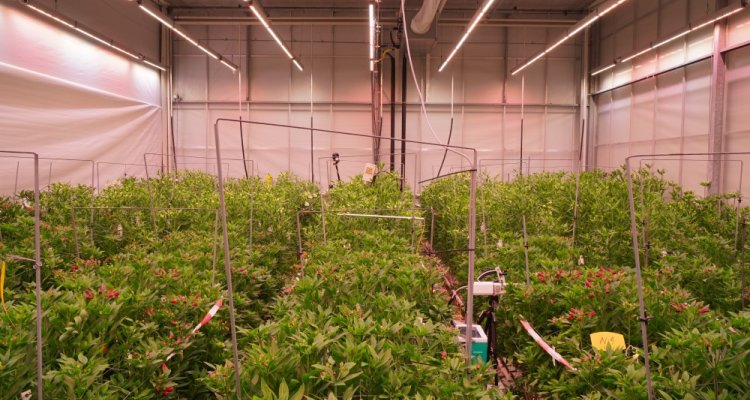
News
More light ensures higher production of Alstroemeria
A higher light intensity ensures a higher production of Alstroemeria. Moreover, the lamps ensure that less fossil fuels are needed. This is the conclusion of research by the Business Unit Greenhouse Horticulture of Wageningen University & Research into climate-neutral cultivation at Alstroemeria.
In the study "Alstroemeria of the Future, close by", a fossil-free cultivation concept is compared with a reference crop. The fossil-free cultivation concept has a diffuse greenhouse cover, high-intensity Full-LED lighting, a double screen and a dehumidification system. The Full LED lighting provides sufficient heat in the greenhouse in the winter together with the heat from the ground cooling, provided that the greenhouse is well insulated. This means that no gas is required for heating the greenhouse. If a grower, for example, produces the required electricity with solar panels, no fossil fuels are required for cultivation.
Higher production due to Full LED exposure
Due to the high intensity, the Full LED exposure leads to a higher production than the low intensity SON-T exposure of the reference; in total over a full crop year more than 40% higher. Production is also higher in the summer. The crop is then not being illuminated, but it cannot be excluded that this is a late effect of the winter exposure. After all, the plant can put more reserves in the underground parts (rhizome).
The best light spectrum
The diffuse glass and better moisture management in the greenhouse ensure a larger mouth opening. And the light spectrum used, chosen on the basis of a short-term study, can also have an effect on production and leaf quality. But is this the best spectrum for all Alstroemeria types? To find out, four light spectra are compared for four varieties (three types) in another study: "Alstroemeria and its light criteria". This investigation started last fall.